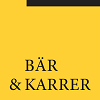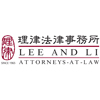-
What are the main causes of action upon which a product liability claim can be brought in your jurisdiction, for example, breach of a statutory regime, breach of contract and/or tort? Please explain whether, for each cause of action, liability for a defective product is fault-based or strict (i.e. if the product is defective, the producer (or another party in the supply chain) is liable even if they were not individually negligent).
There are three main bases for a product liability claim for loss and/or damage suffered by a consumer.
Consumer Protection Act 1987 (CPA)
The EU Product Liability Directive [85/374/EEC] (PLD) was transposed into UK law by the CPA and this remains retained law post-Brexit. This imposes strict liability for defective products (sometimes described as ‘no fault liability’) which have caused injury or damage to private property (excluding damage to the product itself).
Negligence
Unlike the CPA, this is fault based. Liability will attach to a defendant who owes, and breaches, a duty of care that causes an injury or property damage.
Contract
A claimant would need to show that a seller or supplier under a contract for the sale of a product breached an express or implied term of the contract, and that the breach led to loss or damage.
-
What is a ‘product’ for the purpose of the relevant laws where a cause of action exists? Is ‘product’ defined in legislation and, if so, does the definition include tangible products only? Is there a distinction between products sold to, or intended to be used by consumers, and those sold for use by businesses?
Product is defined in s.1(2) CPA as: ‘any goods or electricity and… includes a product which is comprised in another product, whether by virtue of being a component part or raw material or otherwise’. It does not cover the provision of services.
‘Goods’ is further defined in s.45(1) to include things attached to the land and aircraft, ships and vehicles.
The CPA covers products which are sold ‘business to business’ (B2B) and “business to consumer” (B2C) but a claim can only be brought in relation to damage to property that is intended for private use by the consumer. Please see question 3 below which addresses who can bring a claim under the CPA.
There has been a longstanding debate, most actively at EU level, as to whether the scope of the definition of “product” also includes intangible products, such as software or digital content or, rather, whether they constitute a “service”. This is particularly prevalent in the context of emerging technologies, for example smart devices, which comprise physical hardware and cloud-based software which may be provided by way of a download only and subject to automated updates.
The EU’s new Product Liability Directive (EU) 2024/2853 (new PLD), in force from 8 December 2024, expands the definition of a ‘product’ to include intangible components such as software (including AI) and digital manufacturing files. The new PLD will not apply in the UK following its departure from the EU. Subject to the operation of the Windsor Framework, the new PLD may apply in Northern Ireland. This is discussed further at question 23.
-
Who or what entities can bring a claim and for what type(s) of damage? Can a claim be brought on behalf of a deceased person whose death was caused by an allegedly defective product?
Only individuals (also known as ‘natural persons’) can bring a product liability claim under the CPA for death or personal injury or any loss of or damage to property (including land) (s.5(1) CPA).
A claim can be brought on behalf of a deceased person where the death was caused by an allegedly defective product.
-
What remedies are available against a defendant found liable for a defective product? Are there any restrictions on the types of loss or damage that can be claimed?
Under the CPA, claimants can claim compensatory damages if the defective product has caused personal injury or death. A claimant is also entitled to compensation for damage to private property providing the total damage (excluding interest) exceeds £275. There is no upper damages threshold.
By virtue of section 5 of the CPA, in relation to property damage, compensatory damages are only recoverable for damage to property that is for ‘private use, occupation or consumption’. Consumers cannot claim compensation for damage to business property.
There is no liability for any loss or damage to the defective product itself including where the subject of the claim is a component that caused damage to the product itself.
Punitive damages are not an available remedy under the CPA.
-
When is a product defective? What must be shown in order to prove defect?
Section 3 of the CPA sets out the relevant test. There is a defect in a product ‘if the safety of the product is not such as persons generally are entitled to expect’. As the CPA applies to a huge range of products, from toys to medical devices, this is a flexible test.
The landmark case of Gee & Others v DePuy International Limited [2018] EWHC 1208 (QB) (Gee) provides guidance on how the test for defect should be applied:
- The test is objective and asks what people generally are entitled to expect, not what the claimant actually expected.
- Hindsight plays no part in the ‘entitled expectation’ of safety; entitled expectation must be assessed as at the date of supply of the product. When assessing whether the product met entitled expectation, all relevant information to date can be considered.
- A court is entitled to take into account all the circumstances it considers factually and legally relevant to the evaluation of safety, on a case by case basis. See answer to question 7.
This approach was cited with apparent approval by the UK Supreme Court in its judgment in Hastings v Finsbury Orthopaedics Ltd and Stryker (UK) Ltd [2022] UKSC 2019.
-
Which party bears the burden of proof? Can it be reversed?
A claimant bears the burden of proof, and must prove the defect and that the defect caused the damage claimed. The burden of proof cannot be reversed under the CPA.
-
What factors might the court consider when assessing whether a product is defective? To what extent might the court account for a breach of regulatory duty, such as a breach of a product safety regulation?
In assessing the safety of the product, the court will take into account all legally and factually relevant circumstances, including:
- product marketing;
- date of supply;
- any safety mark;
- warnings;
- what might reasonably be expected to be done with the product;
- the time when the product was supplied by its producer to another.
A court may also take into account a regulatory breach, including breach of a product safety regulation if that is legally or factually relevant. However, compliance with relevant regulatory standards is not an automatic defence under the CPA, as per the ruling of Hickinbottom J in Wilkes v DePuy International Limited [2016] (Wilkes). Further, non-conformity with a relevant standard will not always render a product defective (Pollard v Tesco Stores [2006]).
-
Who can be held liable for damage caused by a defective product? If there is more than one entity liable, how is liability apportioned?
The following entities can be jointly and severally liable for damage under the CPA:
- the producer (i.e. the manufacturer) of the product;
- a person who holds himself out as a producer by, e.g. placing his name on the product or using his ‘own brand’ or trademark;
- the importer into the UK. This is a significant change to the pre-Brexit position when the relevant entity was an importer into the EU.
A supplier of a product can be held liable if it fails to identify one of the above entities within a reasonable time period after receipt of a request for this information by a claimant.
-
What defences are available?
The following defences are available to a claim under the CPA once a product is found to be defective:
- the defect is attributable to compliance with any requirement of UK or retained EU law or obligation post Brexit;
- the defendant did not supply the product;
- the product was not supplied in the course of the defendant’s business nor with a view to profit;
- the defect did not exist in the product at the ‘relevant time’. Section 4(2) provides guidance as to the meaning of ‘relevant time’ for electricity;
- the state of scientific and technical knowledge at the time the product was put into circulation was not such that a producer of products of the same description could be expected to have discovered the defect (the “state of the art” or “development risks” defence);
- Where a defendant produced or supplied a component part, the defect was not in that component part but in the subsequent finished product which was wholly attributable to (i) the design of the finished product; or (ii) compliance with the instructions for use provided by the producer of the finished product.
-
What is the relevant limitation period(s) for bringing a claim? Does a different limitation period apply to claims brought on behalf of deceased persons?
A claim must be brought within the following periods:
Three years from the later of:
- The date the injury or loss is suffered; or
- The date of knowledge of the damage, the defect and the identity of the producer.
The three year period can be extended at the court’s discretion.
A claim under the CPA must also be brought within 10 years from the date on which the product was put into circulation, known as the 10 year longstop period. A right of action under the CPA is extinguished after this period.
In Wilson v Beko Plc [2019], the court ruled that consumers are not entitled to rely upon section 41 of the CPA to circumvent the limitation long-stop.
For deceased persons, providing that the action was not already time-barred, a dependant can bring a product liability claim within three years of the date of death, or the earliest date on which (i) the dependant seeking to bring the claim was aware; or (ii)in the opinion of the court it was reasonably practicable for them, in all the circumstances, to become aware that:
- there was a defect in the product;
- the injuries of the deceased were caused wholly, or in part, by the defect; and
- the defendant was a person who could be held liable under the CPA.
-
To what extent can liability be excluded, if at all?
Section 7 of the CPA expressly prohibits liability being excluded by any contract term, notice or any other provision.
-
Are there any limitations on the territorial scope of claims brought under a strict liability statutory regime?
In Allen & Others v DePuy International Limited [2014] (a pre-Brexit decision), it was determined that manufacturers within the European Economic Area (EEA) were not liable under the CPA to consumers suffering injuries outside of the EEA caused by products marketed and supplied outside of the EEA. The judgment left open the question of whether UK manufacturers are liable under the CPA for injuries suffered outside of the UK, but within the EEA.
In Allen, a sample group of claimants from countries outside of the EU brought claims against the defendant in respect of the insertion of prosthetic hip implants manufactured in England. They argued that English law applied to their claims and that they were entitled to rely upon the CPA, notwithstanding that the claimants did not live in England, nor did their alleged injuries occur in England.
The High Court ruled that English law did not apply and, even if it did, the claims fell out of the territorial scope of the CPA as the claimants were non-EU consumers who had suffered damage outside of the EEA in relation to products which had been marketed and supplied outside of the EEA.
The claimants were, however, still entitled to sue DePuy in England relying on alleged breaches under their local laws. A group of New Zealand claimants tried to do so, but were unsuccessful in the subsequent trial on the grounds that under New Zealand law, damages were not recoverable due to the effect of the New Zealand No Fault Compensation Scheme.
However, while these points have not been revisited by the court post Brexit, it remains uncertain whether the CPA is limited only to damage suffered in the UK or also extends to damage suffered within the EEA. It is also uncertain, whether the marketing and/or supply of a product must also be outside either the UK or the EEA, as well as the injury suffered, to take the claim outside the scope of the CPA/PLD.
-
What does a claimant need to prove to successfully bring a claim in negligence?
A claimant must show, on the balance of probabilities, that:
- The defendant owed the claimant a duty of care;
- The defendant breached that duty;
- The breach caused the alleged loss or damage; and
- The loss was reasonably foreseeable.
Establishing a breach of duty requires an examination of the defendant’s actions. It is therefore potentially more challenging for a claimant to establish negligence than CPA liability.
-
In what circumstances might a claimant bring a claim in negligence?
A claimant will often bring a product liability claim in negligence as well as pursuant to the CPA to maximise prospects of success. A claim may be brought by:
- a consumer-purchaser of the product;
- a person who uses the product; or
- a third party bystander who is injured by the product.
Such a claim may be brought against a manufacturer, supplier or distributer who owes a duty of care to all those who can reasonably be expected to make use of its product.
Examples of the manufacturer’s negligence could include a failure to:
- take sufficient care during the design of the product or conduct effective tests which results in a product being defective;
- take sufficient care during the manufacturing process which results in a product being defective;
- provide an effective warning of dangers;
- issue a recall notice or product safety alert if a danger becomes apparent after the product has been put into circulation.
-
What remedies are available? Are punitive damages available?
The law aims to restore a claimant to the position they would have been in had the negligence not occurred.
Compensatory damages are available for losses which are a direct and reasonably foreseeable consequence of the injury or damage suffered, including:
- general damages for non-pecuniary losses, e.g. pain, suffering and loss of amenity;
- special damages for financial losses, e.g. loss of earnings.
Pure economic loss is not recoverable.
Provisional damages may be awarded where a claimant has not fully recovered from injury, or is at risk of further injury in the future, as a result of the defendant’s negligence
Punitive damages are rarely awarded but are available, typically only in cases of deliberate torts where a defendant has calculated that the financial gain from the wrongdoing is likely to exceed any damages payable to a claimant.
-
If there are multiple tortfeasors, how is liability apportioned? Can a claimant bring contribution proceedings?
Liability for the same damage can be joint and several, meaning that liability can be split between multiple tortfeasors. An unsuccessful defendant can bring contribution proceedings against any other tortfeasor in respect of the same damage.
-
Are there any defences available?
A defendant will often look to show that an element of the claim has not been established, e.g. that there was no causal link between the breach of duty and the alleged injury or loss.
Common law defences are also available, including:
- Contributory negligence: where a claimant’s actions contributed towards the loss suffered, there may be a reduction in the damages awarded;
- Voluntary assumption of risk: where a claimant knew of, and accepted, the risks of a product.
-
What is the relevant limitation period(s) for bringing a claim?
The relevant limitation periods are set out in The Limitation Act 1980:
- For claims involving personal injury, three years from the date the damage occurred or from the date that the claimant knew, or reasonably ought to have known, that they had a cause of action, known as “the date of knowledge”. Knowledge can be acquired from the date that the claimant knew the identity of the defendant or realised the significance of their injury;
- For claims not involving personal injury, six years from the date on which the damage occurred, or three years from the date of knowledge for claims concerning latent damage.
-
To what extent can liability be excluded, if at all?
Liability for death or personal injury arising from negligence cannot be excluded.
It is possible to exclude other loss or damage resulting from negligence, for example, property damage. However, any term excluding or restricting liability must be compatible with the requirement of reasonableness set out in Schedule 2 of the Unfair Contract Terms Act 1977 (UCTA).
-
Do the laws governing contractual liability provide for any implied terms that could impose liability where the product that is the subject of the contract is defective or does not comply with the terms of sale?
The Consumer Rights Act 2015 (CRA) applies to Business to Consumer contracts and states that goods supplied to a consumer must be:
- of satisfactory quality: goods should not be faulty or damaged upon receipt;
- fit for that particular purpose: goods must be fit for the purpose for which they are supplied and any specific purpose made known to the seller (expressly or by implication) at the point of purchase; and
- as described: goods supplied must correspond with any description given, or models/samples shown at the point of purchase.
Similar requirements are set out in the Sales of Goods Act 1979 (SGA), which applies to B2B contracts.
-
What remedies are available, and from whom?
Where a breach of contract is established, available remedies are against the immediate supplier or retailer of the defective product. The remedies available will vary depending on the contractual term(s) breached and may include:
- the right to repudiate the contract and reject the goods;
- the right to claim a refund or replacement of goods, or repair of the goods;
- the supplier or retailer may also be ordered to perform a contractual obligation, known as ‘specific performance’;
- if the goods have been accepted, the claimant may be entitled to compensatory damages arising from the delivery of defective goods.
-
What damages are available to consumers and businesses in the event of a contractual breach? Are punitive damages available?
Contractual damages are intended to restore a claimant to the position they would have been in had the contract been properly performed and can be awarded for:
- economic losses, such as loss of income or profit;
- property damage caused by the defective product; and
- non-pecuniary losses (e.g. damages for pain, suffering and loss of amenity) arising from death or personal injury caused by the defective product, providing it can be shown that such losses were of the kind or type that would have been in the reasonable contemplation of the parties at the time the contract was made.
Punitive damages are not available in respect of claims for breach of contract.
-
To what extent can liability be excluded, if at all?
Contractual terms cannot exclude or limit liability for death or personal injury arising from negligence, nor can terms exclude or limit liability for death, personal injury or damage to private property caused by defective goods.
In B2B contracts, it is possible to exclude or limit liability for other loss or damage resulting from negligence or breaches of contract, for example, property damage and financial loss. However, any term excluding or restricting liability must be compatible with the requirement of reasonableness pursuant to Schedule 2 of UCTA.
-
Are there any defences available?
No specific defences arise for contractual claims. However, a claim will fail if the claimant cannot establish a contractual breach and that the breach resulted in damage or injury.
-
Please summarise the rules governing the disclosure of documents in product liability claims and outline the types of documents that are typically disclosed.
For product liability claims involving personal injury, the general rule is that ‘standard disclosure’ applies, as laid down in rule 31.6 of the Civil Procedure Rules (CPR), unless the court directs otherwise. This requires parties to disclose documents in their control:
- on which they rely;
- that adversely affect their own or another party’s case, or support their own or another party’s case.
- that they are required to disclose in accordance with a relevant practice direction.
In appropriate cases, the court may dispense with or limit standard disclosure (for example, in less complex or low value claims) or the parties may agree in writing to do so, subject to approval by the court.
The court can order pre-action disclosure in appropriate cases in order to narrow the issues in the proceedings.
The duty to give disclosure continues until the proceedings are concluded.
The types of documents that are typically disclosed in product liability claims include:
- design files including documents relating to product research, development and testing;
- documents that evidence the date of supply;
- documents evidencing conformity with relevant standards;
- documents that detail risks or warnings;
- complaints information; and
- communications with the relevant product regulator.
Manufacturers and suppliers of products that are subject to product liability claims should preserve relevant documents and information such as those described above.
-
How are product liability claims usually funded? Is third party litigation funding permitted in your jurisdiction and, if so, is it regulated?
Claims are typically funded by conditional fee agreements, damages based agreements and, increasingly, by third party litigation funding (TPLF) i.e. where an independent third party funder agrees to finance a claim, in whole or in part, usually in return for a share of the compensatory damages awarded to the claimant.
TPLF is permitted in the UK although certain arrangements may be unenforceable, having regard to:
- the extent to which the funder controls the proceedings;
- the amount of profit that the funder is expected to make from the total damages award; and
- whether the agreement facilitates access to justice.
TPLF is self-regulated through the Association of Litigation Funders which established:
- a voluntary “Code of Conduct for Litigation Funders” which sets out standards of practice and behaviour to be observed by member funders; and
- a “Complaints Procedure for Litigation Funders”, which sets out the procedure to govern complaints made against funder members by funded litigants.
The regulation of TPLF is one of several issues being considered by the Civil Justice Council’s Litigation Funding Working Group, as part of its review of litigation funding in England and Wales.
On 31 October 2024, the Working Group published its interim report, together with a consultation seeking views from stakeholders on a range of issues, including the regulation of TPLF, the extent to which funders’ returns on TPLF agreements should be capped, and other sources of funding. The consultation closed on 3 March 2025. The feedback is expected to shape the CJC’s recommendations that will be set out in its full report, due for publication by summer 2025.
-
Can a successful party recover its costs from a losing party? Can lawyers charge a percentage uplift on their costs?
The general rule is that the costs of the successful party are borne by the unsuccessful party.
Lawyers can charge a percentage uplift on their costs, commonly referred to as a ‘success fee’, which is based on the level of risk associated with the claim.
In personal injury claims where the funding arrangements were entered into after 1 April 2013:
- a successful claimant can no longer recover success fees, ATE premiums or other arrangement costs from the defendant;
- any success fee agreed is usually paid out of any damages awarded and is capped at 25% of damages inclusive of VAT, with future care and loss being ring-fenced.
Further, Qualified One-way Costs Shifting (“QOCS”) applies to claims involving personal injury commenced after 1 April 2013. QOCS protects claimants from having to pay adverse costs should they lose their claim, save for in circumstances where:
- the claim is struck out;
- the court finds that the claimant is fundamentally dishonest.
Following changes to CPR 44.14, which apply to cases commenced on or after 6 April 2023, defendants can now enforce costs orders up to the value of any aggregate settlement, to include all damages, costs and interest.
-
Can product liability claims be brought by way of a group or class action procedure? If so, please outline the mechanisms available and whether they provide for an ‘opt-in’ or ‘opt-out’ procedure. Which mechanism(s) is most commonly used for product liability claims?
In England and Wales, claimants may bring product liability group actions using either formal or informal mechanisms:
- Group Litigation Orders (GLOs) (CPR 19):GLOs have been the most commonly used formal mechanism for product liability related group actions to date. The court is empowered to make a GLO where there are multiple claims which give rise to common or related issues of fact or law, to facilitate the proper management of such claims. GLOs provide for an ‘opt-in’ procedure, whereby claimants are required to issue a claim and be entered on to the group register. There is usually a trial of the issues that are common to all claims, with judgment being binding on all parties to the GLO. Examples of recent GLOs are discussed below in question 29.
- Representative actions (CPR 19.6): A ‘representative action’ may be brought by one or more claimants on behalf of an undefined group of persons who have the “same interest”. Representative actions operate on an ‘opt-out’ basis, meaning that the action includes all persons who fall within the class, unless they express their wish not to be included. Judgment is binding on the represented class. This procedure has been seldom used due to the strict interpretation and limited scope of the ‘the same interest’ requirement. This narrow approach was affirmed by the UK Supreme Court (UKSC) in the data privacy action of Lloyd v Google [2021] UKSC 50.
- In Jalla & Anr v Shell International Trading & Anr [2021], the Court of Appeal found that the claimants did not satisfy the ‘same interest’ requirement of a representative action because each claim required individual consideration and proof of damage, notwithstanding that there were common issues of facts to be determined.
- Similarly, in Prismall v Google UK Limited & Deepmind Technologies [2023],the court ruled that a representative action brought on behalf of 1.6 million people whose medical records were used by Deepmind for the development of an app, did not satisfy the “same interest” requirement as the claimants were required to establish individual damage or distress.
- These decisions are demonstrative of why the representative actions procedure has not, to date, been used for product liability actions which require an individual assessment of causation, loss and damage. This approach was recently affirmed by the Court of Appeal in a securities action in which a group of shareholders sought to bring their claim using the representative actions procedure. The claimants sought to obtain a finding of liability through the use of the representative actions procedure, with individual assessments of causation and quantum to follow (also known as a bifurcated approach). The Court of Appeal rejected the use of a bifurcated approach to the representative actions procedure on the basis that it would deprive the court of its case management powers to strike out speculative unmeritorious claims (which is contrary to the overriding objective). Further, it was not necessary to facilitate access to justice for investors.
- Informal case management. For example, a test case may be advanced to trial in order to determine common issues relevant to other similar claims, with those claims being subject to a stay of proceedings pending the outcome of the test case.
In Scotland, the Civil Litigation (Expenses and Group Proceedings) (Scotland) Act 2018 (2018 Act), effective since July 2020, enables two or more individuals with the ‘same, similar or related claims’ to commence a single group action. Product liability group actions can be brought pursuant to the Act which operates on an opt-in basis. As of January 2025, group proceedings have been given permission to be brought in the Court of Session pursuant to the 2018 Act. Five of these actions concern claims brought against diesel car manufacturers in relation to allegations concerning the use of ‘defeat devices’ to bypass emissions tests.
In Northern Ireland, representative actions can be brought by one party representing individuals who have the ‘same interest’ in a claim although this procedure is rarely used for product liability claims.
-
Please provide details of any new significant product liability cases in your jurisdiction in the last 12 months.
There have been no significant judgments in the UK since Hastings v Finsbury Orthopaedics Ltd and Stryker (UK) Ltd [2022] UKSC 2019, a landmark case that concerned an allegedly defective metal on metal (MOM) total hip replacement. The case was subject to an appeal before the UKSC in April 2022 which was the first time that the UKSC had considered the application of the CPA. Judgment was handed down in favour of the Respondents in June 2022. The decision reinforces the approach to the question of ‘defect’ under the CPA, as previously determined in Wilkes and Gee.
On 8 September 2023, a GLO was granted by the High Court in the ‘Essure Group Litigation’, which concerns an allegedly defective birth control device. One of the defining issues in the GLO is the approach in law to the determination of defect under section 3 of the CPA.
Group claims are also being pursued in the UK and globally against diesel car manufacturers in relation to allegations concerning the use of ‘defeat devices’ to bypass emissions tests. To date, the UK High Court has granted several GLOs in relation to group actions brought against individual car manufacturers. Trials against four manufacturers are due to take place in 2025.
-
Are there any policy proposals and/or regulatory and legal developments that could impact the current product liability framework, particularly given the advancements in new technologies and increasing focus on the circular economy?
In 2021, the UK Law Commission (“the Law Commission”) identified “product liability and emerging technology” as an area for potential law reform in its 14th Programme of Law Reform, noting that the CPA was “not designed to accommodate software and related technological developments such as 3D printing or machines that ‘learn’”.
This view reflects the EU’s rationale for reforming the PLD. The EU’s new PLD, which entered into force on 8 December 2024, aims to address the risks and challenges posed by the digital age, modern supply chains and the circular economy. It contains significant changes to the existing regime which are likely to make it easier for EU claimants to successfully pursue product liability claims, particularly in respect of cases involving new technologies.
Although the Law Commission announced in 2023 that its proposed 14th Programme of Law Reform would be put on hold indefinitely due to other commitments, it announced in November 2024 that it plans to submit a programme to the Lord Chancellor in early 2025.
While the question of CPA reform has also been raised in recent government consultations on product safety and aviation autonomy, the outlook remains unclear. The government’s new Product Regulation and Metrology Bill was introduced on 4 September 2004 and empowers the Secretary of State to enact future legislation in relation to product and metrology regulation. This Bill makes reference to the possible repeal of certain parts of the CPA, however, it did not include reference to Part 1 of the CPA which governs liability, indicating that product liability reform is not a priority for the government at this juncture.
-
What trends are likely to impact upon product liability litigation in the future?
Online marketplaces
Product liability legislation comes up against serious challenge when faced with online marketplace platforms. Current legislation provides for a traditional form of supply chain, namely a producer, importer and supplier, and the concept of an online marketplace does not necessarily fall into these categories.
The EU has already sought to address the challenges posed by online marketplaces through:
- the Market Surveillance Regulation (“MSR”) which provides that certain categories of CE marked products, such as toys and electrical equipment, should not be placed on the EU market unless an economic operator is established there. Those economic operators are subject to more extensive market surveillance obligations;
- the new General Product Safety Regulation (GPSR) – applicable from 13 December 2024 and which, replaces the 20 year old General Product Safety Directive – includes provisions to improve the safety of products sold on online marketplaces. In particular, the new GPSR imposes specific obligations on online marketplaces, including in relation to the establishment of internal processes as well as reporting and monitoring of product safety issues.
- the new PLD which provides that online marketplaces can be held liable for defective products in certain circumstances.
In the UK, the difficulties consumers may face when seeking redress in respect of non-compliant products was addressed in the response to the Office for Product Safety and Standards’ (OPSS) Call for Evidence, a public consultation launched in March 2021 as part of the UK Government’s ‘Product Safety Review’. The response published in November 2021 highlighted the problems of establishing where responsibility or liability lies in non-traditional models of supply.
These issues were considered further in the UK government’s subsequent Product Safety Review consultation which opened in August 2023. In particular, the consultation noted that, whilst some online marketplaces have policies and processes in place to address the listing and re-listing of unsafe or non-compliant products, approaches across the industry are inconsistent. The consultation has sought views on a number of proposals concerning the duties of online marketplaces. The government has also pledged to explore ways to develop and improve data sharing between regulators and online marketplaces.
In August 2023, the OPSS published the outcome of its programme of test purchasing to check compliance of products available to UK consumers from specific online marketplaces. This reported that more than 80% of products purchased online failed safety checks.
Further, with UK authorities reported to have withdrawn more than 10,000 unsafe products from online platforms in 2021 alone, there is scope for the onset of disputes to reach the courts.
‘Forever chemicals’
In the UK, there is increased concern in relation to the use of Perfluoroalkyl and Polyfluoroalkyl substances (PFAS), often known as ‘forever chemicals’, which are a group of highly persistent, manmade chemicals found in various industrial and consumer products that do not naturally break down.
PFAS litigation has already reared its head in the United States and Europe. Whilst this litigation has predominantly concerned environmental related claims, there is a growing trend for PFAS claims to be brought against manufacturers of consumer products. Manufacturers and importers of PFAS and products containing PFAS could face similar claims in the UK, particularly if more stringent regulation is introduced in due course. The UK’s growing appetite for group litigation provides fertile ground for product litigation in this area.
Lithium-Ion Batteries
Lithium-ion batteries are commonly used as a source of energy across a wide range of consumer products. Their benefits include their portability, long lifespan and fast charging times. However, lithium-ion batteries are known to present a potential fire hazard if they overheat, resulting in thermal runaway and placing end users at risk of suffering property damage, serious personal injury or death. In recent years, there have been a number of product safety warnings and recalls of lithium-ion batteries.
There is therefore a growing risk of product liability claims and litigation arising from greater consumer awareness of the safety of lithium-ion batteries.
Increased focus on regulatory compliance
In light of the evolving regulatory and legislative landscape, we expect to see breaches or non-compliance with relevant general and/or sector specific product safety regulations (for example, those relating to cybersecurity, automotives, food products and medical devices) becoming a more central focus in a court’s assessment of defect in future product liability claims.
United Kingdom: Product Liability
This country-specific Q&A provides an overview of Product Liability laws and regulations applicable in United Kingdom.
-
What are the main causes of action upon which a product liability claim can be brought in your jurisdiction, for example, breach of a statutory regime, breach of contract and/or tort? Please explain whether, for each cause of action, liability for a defective product is fault-based or strict (i.e. if the product is defective, the producer (or another party in the supply chain) is liable even if they were not individually negligent).
-
What is a ‘product’ for the purpose of the relevant laws where a cause of action exists? Is ‘product’ defined in legislation and, if so, does the definition include tangible products only? Is there a distinction between products sold to, or intended to be used by consumers, and those sold for use by businesses?
-
Who or what entities can bring a claim and for what type(s) of damage? Can a claim be brought on behalf of a deceased person whose death was caused by an allegedly defective product?
-
What remedies are available against a defendant found liable for a defective product? Are there any restrictions on the types of loss or damage that can be claimed?
-
When is a product defective? What must be shown in order to prove defect?
-
Which party bears the burden of proof? Can it be reversed?
-
What factors might the court consider when assessing whether a product is defective? To what extent might the court account for a breach of regulatory duty, such as a breach of a product safety regulation?
-
Who can be held liable for damage caused by a defective product? If there is more than one entity liable, how is liability apportioned?
-
What defences are available?
-
What is the relevant limitation period(s) for bringing a claim? Does a different limitation period apply to claims brought on behalf of deceased persons?
-
To what extent can liability be excluded, if at all?
-
Are there any limitations on the territorial scope of claims brought under a strict liability statutory regime?
-
What does a claimant need to prove to successfully bring a claim in negligence?
-
In what circumstances might a claimant bring a claim in negligence?
-
What remedies are available? Are punitive damages available?
-
If there are multiple tortfeasors, how is liability apportioned? Can a claimant bring contribution proceedings?
-
Are there any defences available?
-
What is the relevant limitation period(s) for bringing a claim?
-
To what extent can liability be excluded, if at all?
-
Do the laws governing contractual liability provide for any implied terms that could impose liability where the product that is the subject of the contract is defective or does not comply with the terms of sale?
-
What remedies are available, and from whom?
-
What damages are available to consumers and businesses in the event of a contractual breach? Are punitive damages available?
-
To what extent can liability be excluded, if at all?
-
Are there any defences available?
-
Please summarise the rules governing the disclosure of documents in product liability claims and outline the types of documents that are typically disclosed.
-
How are product liability claims usually funded? Is third party litigation funding permitted in your jurisdiction and, if so, is it regulated?
-
Can a successful party recover its costs from a losing party? Can lawyers charge a percentage uplift on their costs?
-
Can product liability claims be brought by way of a group or class action procedure? If so, please outline the mechanisms available and whether they provide for an ‘opt-in’ or ‘opt-out’ procedure. Which mechanism(s) is most commonly used for product liability claims?
-
Please provide details of any new significant product liability cases in your jurisdiction in the last 12 months.
-
Are there any policy proposals and/or regulatory and legal developments that could impact the current product liability framework, particularly given the advancements in new technologies and increasing focus on the circular economy?
-
What trends are likely to impact upon product liability litigation in the future?









